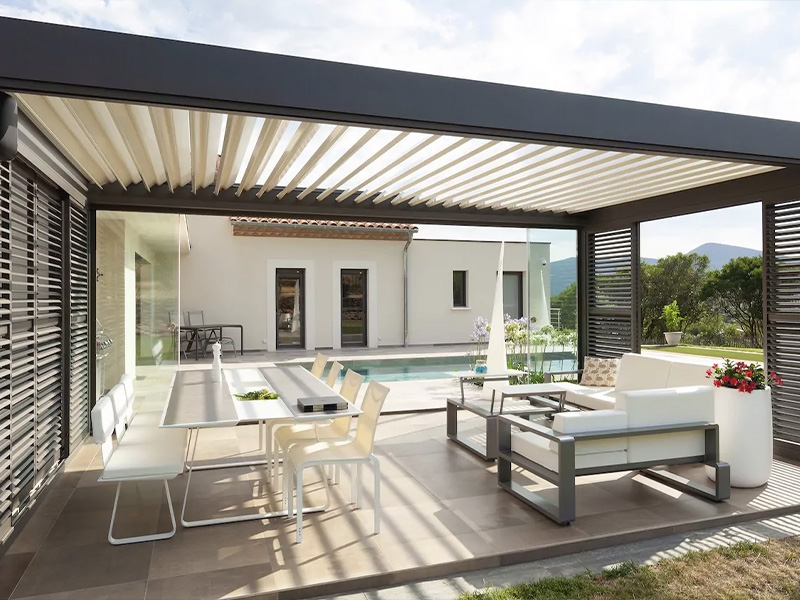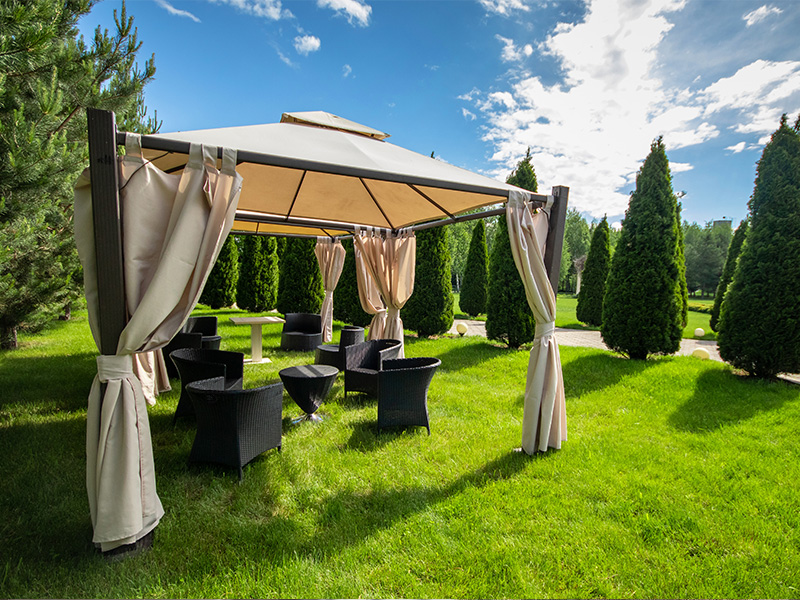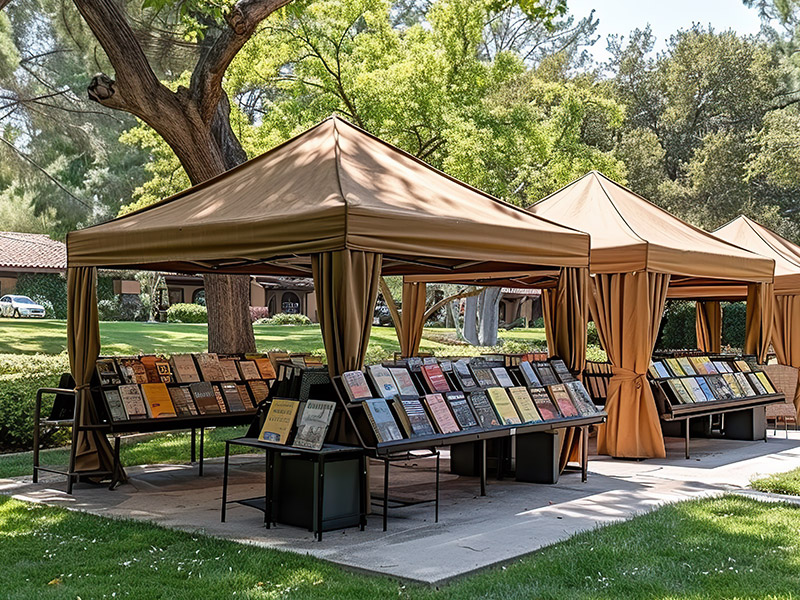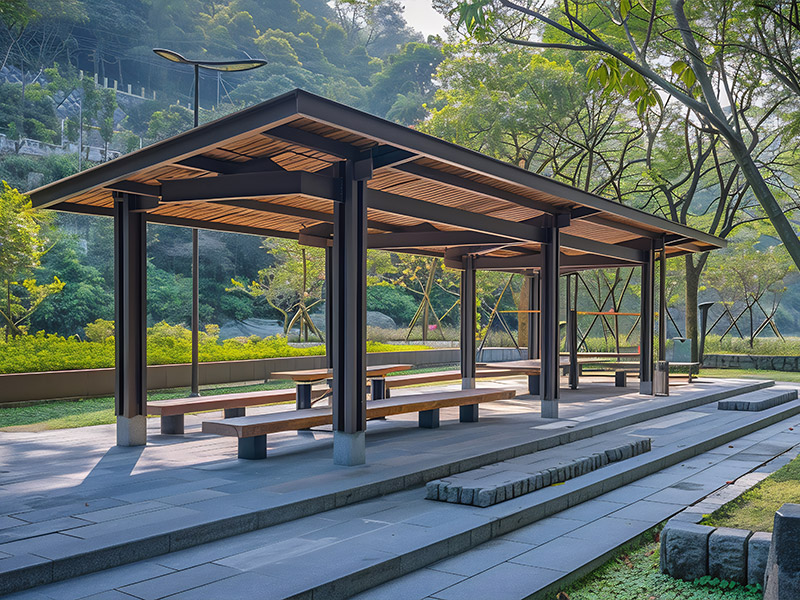
Outdoor pavilions serve multifunctional roles in commercial spaces such as hotels, resorts, cafes, and shopping malls. They enhance environmental aesthetics, improve customer experience, and increase commercial value.
In hotels, pavilions can function as rest areas, special dining spots, or private activity spaces, combined with natural landscapes and lighting to create a romantic atmosphere. Resorts often use ecological materials to build pavilions that integrate SPA, meditation, or cultural performances, making them popular photo spots. Cafes use pavilions to expand seating or offer themed experiences, such as Japanese tea pavilions or Nordic glass greenhouses, attracting customers to linger. Shopping malls install pavilion clusters in open-air squares or rooftop gardens, providing rest areas, brand pop-up stores, or parent-child interactive spaces to boost foot traffic.
Moreover, pavilion designs are increasingly intelligent and sustainable, integrating technologies such as Bluetooth speakers and solar roofs, while using eco-friendly materials. These pavilions meet modern consumers’ diverse needs for comfort, aesthetics, and functionality, and have become key elements for differentiated competition in commercial projects.

Outdoor pavilions serve as both functional spaces and aesthetic highlights in home courtyards, such as villa gardens and terraces. In villa gardens, they can function as leisure tea rooms, outdoor living areas, or family dining spaces, surrounded by rattan furniture and greenery for a natural, elegant atmosphere. Terrace pavilions can become sunny study rooms, yoga areas, or star-gazing platforms, with retractable ceilings balancing shade and views.
Modern designs integrate materials and styles—for example, antiseptic wood with steel for a simple industrial look, or traditional pavilions in Chinese gardens for cultural charm. Smart pavilions enhance comfort with integrated lighting, outdoor audio, and automatic sunshades. A well-designed pavilion not only meets functional needs but also elevates the overall appeal and value of a courtyard.

Outdoor pavilions are highly adaptable and versatile for commercial activities. In exhibitions, they serve as brand display centers with customized designs and logos, while providing shaded, rainproof negotiation spaces. For outdoor weddings, decorated pavilions create romantic ceremony backdrops and reception areas, using flowers, lights, and veils for a dreamy atmosphere. In markets, modular pavilions offer flexible layouts and easy assembly, providing comfortable shopping spaces for customers.
Modern activity pavilions often feature LED screens, intelligent lighting, and quick assembly designs to meet diverse, time-sensitive needs. Professionally designed pavilions enhance visual appeal and functionality, making them indispensable flexible solutions for commercial outdoor events.

Outdoor pavilions are a finishing touch in urban public spaces, serving multiple functions in parks, squares, commercial streets, and other areas. In municipal parks, they provide tourists with shaded resting spots and blend organically into the garden landscape. Pavilions in urban squares often serve as cultural display platforms, hosting small performances and showcasing the city's history. On commercial pedestrian streets, they offer temporary resting points while enhancing the thematic style of the area.
Modern public pavilions emphasize comfort and smart features, including USB charging ports, intelligent lighting, and emergency call systems. Some also incorporate eco-friendly technologies, such as solar power. Durable materials like antiseptic wood and aluminum alloy ensure long-term reliability, while barrier-free designs reflect the inclusiveness of the city. These thoughtfully designed pavilions not only improve public space usage but also enrich the urban landscape through artistic design, reflecting the city’s character.